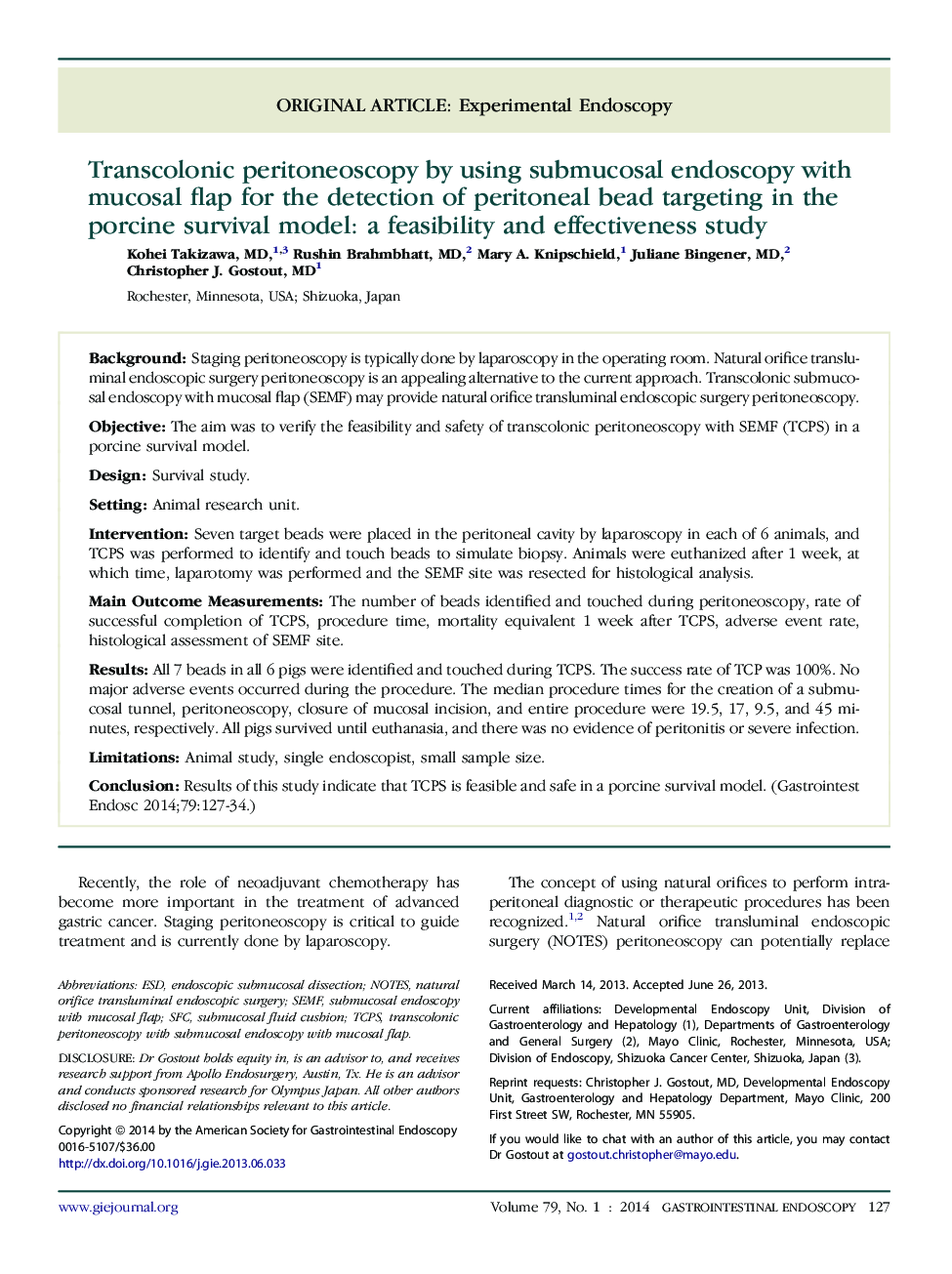| Article ID | Journal | Published Year | Pages | File Type |
|---|---|---|---|---|
| 3303791 | Gastrointestinal Endoscopy | 2014 | 8 Pages |
BackgroundStaging peritoneoscopy is typically done by laparoscopy in the operating room. Natural orifice transluminal endoscopic surgery peritoneoscopy is an appealing alternative to the current approach. Transcolonic submucosal endoscopy with mucosal flap (SEMF) may provide natural orifice transluminal endoscopic surgery peritoneoscopy.ObjectiveThe aim was to verify the feasibility and safety of transcolonic peritoneoscopy with SEMF (TCPS) in a porcine survival model.DesignSurvival study.SettingAnimal research unit.InterventionSeven target beads were placed in the peritoneal cavity by laparoscopy in each of 6 animals, and TCPS was performed to identify and touch beads to simulate biopsy. Animals were euthanized after 1 week, at which time, laparotomy was performed and the SEMF site was resected for histological analysis.Main Outcome MeasurementsThe number of beads identified and touched during peritoneoscopy, rate of successful completion of TCPS, procedure time, mortality equivalent 1 week after TCPS, adverse event rate, histological assessment of SEMF site.ResultsAll 7 beads in all 6 pigs were identified and touched during TCPS. The success rate of TCP was 100%. No major adverse events occurred during the procedure. The median procedure times for the creation of a submucosal tunnel, peritoneoscopy, closure of mucosal incision, and entire procedure were 19.5, 17, 9.5, and 45 minutes, respectively. All pigs survived until euthanasia, and there was no evidence of peritonitis or severe infection.LimitationsAnimal study, single endoscopist, small sample size.ConclusionResults of this study indicate that TCPS is feasible and safe in a porcine survival model.
